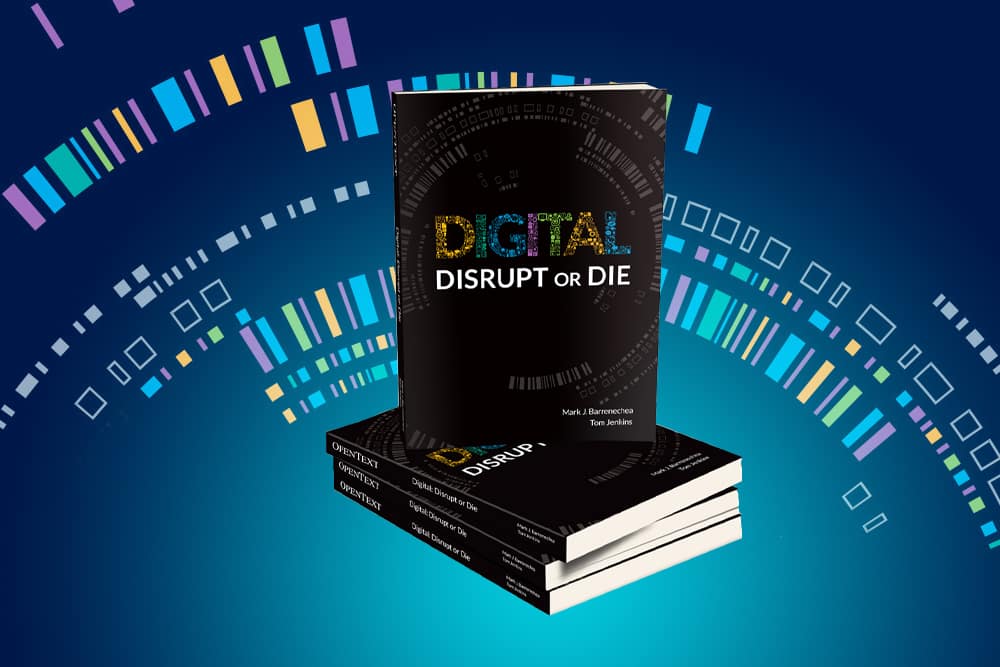In my first post in this blog series, I examined how the speed of digital is disrupting market leaders, and determined that the only way for them to keep pace and stay competitive is to transform into a digital business. But what exactly is a digital business and how does an organization transform itself?
In a digital business, all major operating functions are empowered by digital technology. This means that the business engages customers and conducts business through digital channels, uses digital assets and/or capabilities, and sells digital products or services. As in the case of startups, the value proposition is keenly focusing on serving digital consumers and is enabled by digital technology. This fundamentally impacts an organization’s “value chain.”
The value chain of a digital business is more cyclical than it is linear. The value chain is based on a series of interactions and transactions. From the creation of products and services to their consumption, employees, consumers, partners, and processes rely on digital technology for easy access to goods (whether it be products, services, or information), constant connectivity, and immediacy of insight. The entire customer journey is digitized. As a result, the business works in ways that are open, flexible, and support ongoing collaboration and innovation.

The Linear Value Chain is Replaced by an Ecosystem
In their transformation to a digital business, organizations should reconceptualise themselves as part of an extended enterprise ecosystem, from which they (or their customers or partners) can assemble products and services according to their needs. A digital business digitizes all of its information and processes for efficiency in the back office and deeper levels of engagement in the front (customer-facing) office. As part of a larger ecosystem, a digital business is better equipped to innovate, pivot their operations, customize their products and services, and deliver new products that satisfy consumer need. They can scale their manufacturing capacity and shift geographies as needed. Ultimately, a digital business gains new ways of working to improve productivity, reduce costs, and accelerate business growth.
The benefits of transformation into a digital business move beyond those belonging to digital marketing, or creating consistent consumer experiences across digital channels. Digitizing information and processes results in improved efficiencies, higher productivity levels, and lower operational costs. According to McKinsey, companies that digitize their operations can reduce their costs by 9 percent.[1]
As digital technologies transform business operations, all major components of the business will be impacted. The components of the 2020 digital business are already emerging and include the Digital Workplace, Digital Engagement, the Digital Supply Chain, and Digital Governance and Security. This blog series will examine each of these facets in detail.
Organizations that want to digitize their operations need to focus on the value that digital brings, develop a strategy, and prioritize projects for transformation. They will need to iterate and realize that iteration is part of the process—a more important aspect than perfection. Their entire ecosystem must be digital, so the business must reconfigure its organizational structure, its technology infrastructure, hire the right resources, and focus on the information systems and standards that enable true transformation.
As we move rapidly toward a Digital World, one thing is clear: information lies at the heart of innovation and disruption. No longer considered just the cost of doing business, information is instrumental in driving innovation and growth. When used the right way, information leads to greater customer satisfaction, accelerates time-to-market, helps to create new opportunities, and enables businesses to remain relevant and competitive. Information is a key strategic component for every organization today and critical to enabling transformation.
In my next blog, I’ll examine how “Information is the New Currency” in a Digital World. Find out how you can capitalize on digital disruption.
Read my book, Digital: Disrupt or Die.
[1] “The Digital Enterprise,” McKinsey & Company, November 2013.




